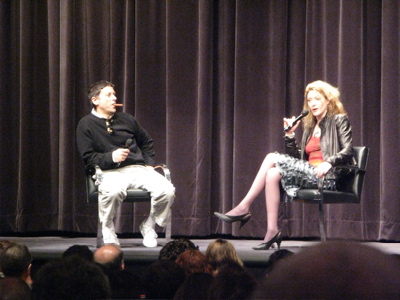Tracked.com
One of my all-time great moments as a web user was the launch of Yahoo! Finance. It was everything I had ever wanted as an investor, at least as a public market investor. I could not believe that all of it was free and in one place. I was a loyal Yahoo! Finance user for the better part of ten years. Recently I've found myself using Google Finance a bit more. But rarely does a day go by when I don't find myself visiting a service like Yahoo! Finance or Google Finance.
For the past few months, I've been using a new service instead of these two workhorses. It is called Tracked.com and it is a Union Square Ventures portfolio company.
We've never been much for "stealth" projects and this is our first. We invested in Tracked.com in the summer of 2008 and have watched it slowly but surely take shape over the past year. And we are very excited that it has now launched publicly (it was quietly available on the open web for the past few months under a different URL). Tracked.com is the brainchild of Mike Yavonditte, who ran and sold Quigo to AOL in late 2007. Mike has recruited a top notch team to go after this opportunity.
The opportunity is simply to redefine what a business information service should be on the open internet. Yahoo! Finance and Google Finance are largely ticker driven. If the company you want to learn about is not publicly traded, then you aren't going to find much information on these services.
Contrast that with services like LinkedIn or Crunchbase. These services are company and people driven. If a company or a person is well known, there is a good chance they have a page in Tracked.com. And if they don't now, they will soon.
There is one more piece to Tracked.com that is important to talk about. Tracked.com is social. Users have a profile in the service and can send messages to each other in the service (and via twitter and facebook very shortly). Objects in the service (news, quotes, charts, public filings, companies, people) can be sent around like links in twitter and facebook.
I like to say that Tracked.com is what sits in the triangle that you can form with Yahoo! Finance on one point, LinkedIn on another point, and Twitter on the third point. It is not designed to compete with these services. It is designed to complement them and extend their usage models.
But as I said yesterday, it's a lot better to spend 15 minutes using a service than reading about it. So go check out Tracked.com and let me know what you think of it.



![Reblog this post [with Zemanta]](http://img.zemanta.com/reblog_b.png?x-id=a8a8e2f2-09ab-49dc-b208-175ecd0d42fd)
![Reblog this post [with Zemanta]](http://img.zemanta.com/reblog_e.png?x-id=92010e6e-5841-4f95-a88c-69c1bc1dbd7c)